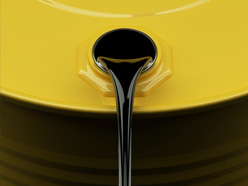
As investors worry about oil, other commodities have improved.
“We’ve seen a big drop in the value of crude in a very short period, and that’s due to a couple reasons,” says Scott Vali, formerly vice-president and portfolio manager of equities at CIBC Asset Management.
The first reason, he says, “is excess supply above expectations, largely led by Libya.” Second, compared to expectations, oil demand is down about 600,000 barrels per day.
Other resources have also taken a price hit, says Vali. “Iron ore prices have fallen because of supply coming into the market, led by Rio Tinto and BHP. Those additions are coming at the low end of the cost curve, and that’s squeezing out higher-cost producers.”
Read: Will oil prices keep plummeting?
However, resources such as nickel and zinc have benefited from supply and demand changes, and Vali expects their prices to remain strong into the new year.
“Nickel in particular has been doing well, and that’s largely because of a reduction in supply of nickel pig iron, which is a very low-grade iron containing nickel.”
China invented nickel pig iron (NPI) as a cheap input for stainless steel production, which traditionally uses pure nickel. China had been buying ore to create NPI from Indonesia and The Philippines, but in January 2014, the Indonesian government banned raw ore exports “as they’re looking to have more of the [NPI] processing done in Indonesia,” says Vali.
NPI production fell, and prices of nickel began to rise. Vali says the price increase was premature, given the subsequent pullback in mid-2014, but adds the nickel deficit will affect the physical market more in 2015, causing prices to rise again.
Read: How to get risk-managed commodities exposure
He’s also bullish on other metals. Some zinc mines are going offline, which will tighten supply and improve prices. But “longer-term, the biggest one we like is copper. Although 2015 looks to be a surplus year for copper as some mines come into the market, we think once we move past that into 2016 to 2018, copper looks like it’s set to be in a fairly sizeable deficit. That should be very positive for the copper price.”
Vali says, “We’re looking to use any selloff that occurs through the first part of 2015 as an opportunity to accumulate more of those companies.”
One sector he isn’t considering is renewable energy. “We’ve seen a lot of investment in the past few years, but it’s very reliant on government subsidies to make economic returns.”